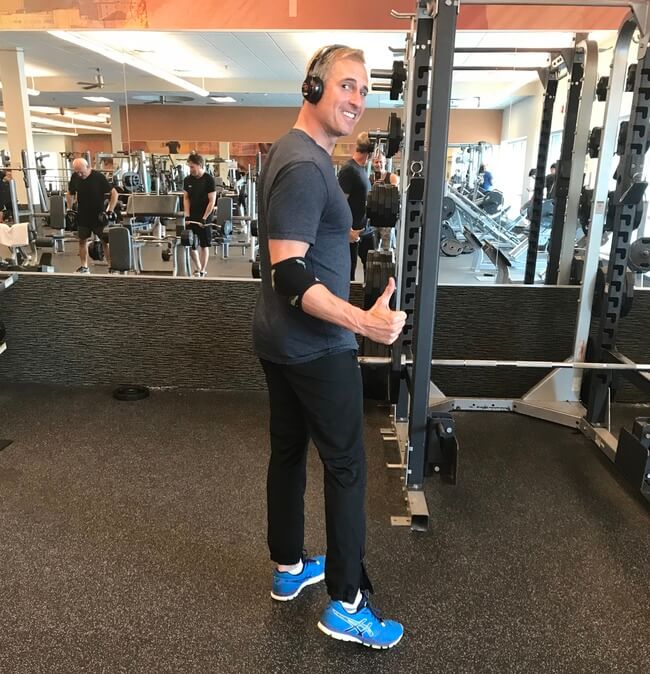
High Intensity Interval Training, also known as HIIT, is mentioned a lot right now, and I mean a lot when you are searching for ways to roast calories and fat and drop some pounds, not just during the work out itself, but in the hours following your HIIT work out as well.
Sounds amazing right? But, is it true?
First off, what is HIIT. The idea is that rather than jogging at a steady pace, you sprint as fast as you can, as hard as you can for one minute and then walk or jog very lightly for a minute. Do this back and forth for 10-15 minutes and you’ve done a proper HIIT work out. The ideal of going as hard as you can and then relaxing can be applied to every form of cardio, but is usually applied to running.
James Fell definitely had his doubts and dove into the numbers behind HIIT as a straight up calorie burner. To delve deeper into this, James decided to physically test the theory himself. His approach was to essentially compare equal amounts of HIIT to Steady State cardio. His findings, showed that, “the exact same amount of work was completed by my body in the same total time. Note that “in the same total time” is important.” And added, “the same number of calories were burned both during and after those runs whether it was via HIIT or via a steady pace.”
Those results for fell are not uncommon, but there are still those who extol the increased calorie burning virtues of High Intensity Interval Training. Scott Wiess () is an exercise physiologist and trainer, who asserts “HIIT burns more calories during and after a workout than continuous aerobic training. he bursts of increased intensity simply increase the caloric expenditure, thus, more total calories are burned aiding in better body composition.”
So, as a straight Caloric burner, you are going to find HIIT and Steady State to be almost Identical, but that doesn’t meant that it doesn’t have some benefits over classic cardio. What HIIT really helps an athlete do, is enhance performance, according to Fell, “Overall, HIIT increases the body’s lactate threshold, increases maximal oxygen consumption, increases maximal aerobic speed and power, as well as changes mitochondrial number and function, enzyme activity and energy stores in the muscle cells.”
So on a biological level, what HIIT is doing, is putting your body in a position to do more work, which is one way that it definitely helps to burn more fat. Wiess sees another benefit to your body doing more work, saying “HIIT increases the flexibility and elasticity of arteries and veins better than continuous aerobic exercise, Because of the increased pressure demand of HIIT, the vessels actually get a workout as well.”
This means that HIIT can put your heart in a position to improve it’s overall health.
However, it is important to point out that High Intensity Interval Training can also lead to injury if done far too frequently. One reason for this, as Jeremy Chin () points out is in form, which we all know is super important to any form of fitness, saying, “the multi-jointed complex movements and intense pace of HIIT workouts can cause you to stray from proper form, which can result in injury. The goal should be to go as fast as you can, and still maintain proper form and control. Many people focus on speed, not technique.”
Chin also adds that there are other reasons HIIT can cause injury, “HIIT’s high-impact format puts a lot more strain on your system than regular exercise, and muscles are often torn in the process. All the grinding of gears, coupled with improper rest and recovery, can lead to serious, long-term injury.”
Fell, also points out “One potential problem with HIIT is that it can be so exhausting it causes you to couch sit the rest of the day, meaning fewer calories burned than if you did a steady state workout followed by some non-exercise activity.”
One important aspect of HIIT that gets extolled over and over is the after burn effect. The claim here is that doing High Intensity Interval Training will lead your body to burn even more calories after your work out is done. Dr. Christopher Scott, who is an exercise physiology professor believes that HIIT is the ultimate in terms of the afterburn effect saying, “that the greater the exertion, the greater the after effects. For example, sprinting as fast as you can for 30 seconds for 5 rounds will have a much larger afterburn effect compared to jogging for 30 minutes.” Adding, that a long, steady-paced jog hardly if at all triggers the desirable afterburn”
So, as with all exercises, HIIT has advocated on both sides of the argument who make compelling points, and the only real way to know if it’s right for you, is to get out there and give it a try. Everyone is different, and everyone’s body reacts differently to different programs.

